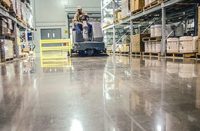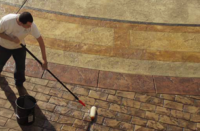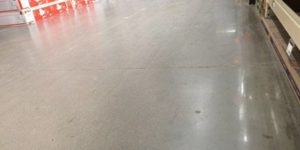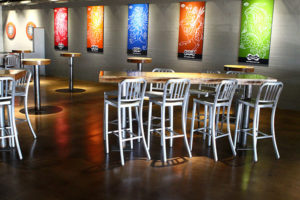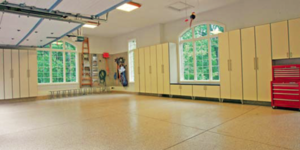
Like many in the restaurant industry, we have converted our dining room floors over to polished concrete. Many people believe that a correctly installed polished floor is a one-time thing. It’s concrete, right? It’ll last forever.
This is only true when you understand and implement a proper maintenance plan. Otherwise , the floors can deteriorate quickly.
Properly maintained floors give locations the awesome feel and pop that polished concrete is known for. The following plan fits our concept and traffic and outlines what a proper care and maintenance program entails. Depending on the business and traffic, this schedule may need to be adjusted.
Daily cleaning
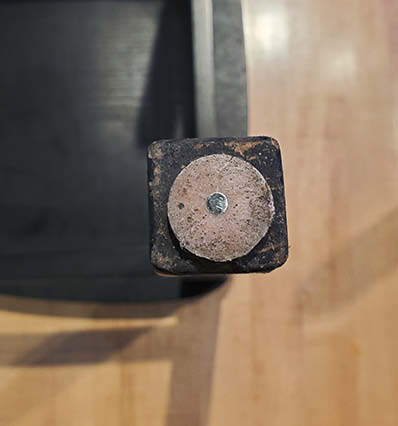
Polishing contractors should inform clients that using the correct chemicals to clean the floor is an absolute must. Many people mistakenly use products that contain harsh chemicals that destroy the floor’s finish in just a few weeks. As part of our daily routine, we use an environmentally friendly maintenance cleaner specifically designed for concrete floors that are treated with lithium silicate hardening/densifying products. The product safely removes common soiling without affecting the shine.
Dirt, salt, oil, food and other items left on the floor are our enemy and will do damage. Dirt on the floor that’s walked on by hundreds of people acts like sandpaper and slowly wears small scratches in the surface. Ice-melt salt can eat away at the concrete, as will highly acidic foods such as tomatoes.
Daily and even mid-day cleaning is the easiest way to minimize this impact and increase the floor’s longevity.
Biannual burnishing
We contract with a janitorial company that comes in every six months and auto scrubs the floor with a product that’s specifically designed for auto-scrubbers before burnishing the surface with a propane burnisher. A propane burnisher is a must to get the necessary speed for the stain protect to pop again.
Per our request, the company uses an 800-grit pad. Any higher grit and the crew would be working the floor all night with less effect. And a lower grit will scratch the floor and actually do more damage than good.
Once they’re done burnishing, we get them to take 12 gloss readings on the floor. This helps us understand the floor’s condition and determine if any areas require additional help.
Floors deteriorate over time and we expect the floors to decrease three to four points in gloss between each biannual burnishing. If the floor dropped 20 points in a six-month period, we’d know that some external factor — such as ice melt or a harsh cleaner — is contributing to its decline.
Every four to six years
Once the floors have dropped in gloss approximately 20 points, restaurant owners like myself should expect to have another layer of stain protect applied. Done in lieu of the biannual burnishing, this service should bring the floor back to its original gloss or very close to it. Six months later, it will be time for the biannual service to resume.
This is where it gets a little tricky as far as gloss goes. Service companies can apply stain protection to a floor incorrectly and the gloss reading will still jump back up to the desired levels. For instance, running a burnisher too fast and not getting the chemical to set will achieve an initial pop. However, within the next few weeks, the chemical will wear off and the floors are back to where they were. Putting the chemical on too thin can also cause issues.
The most important thing to do when judging a floor is to have pictures taken looking straight down. Pictures at an angle always look amazing. However, when you look straight down, you’ll get a true read on the floor.
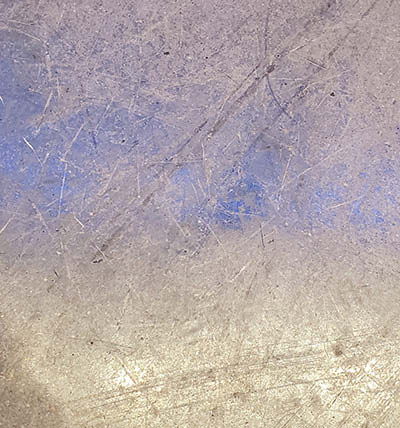 If the floor’s done correctly, you should clearly see the light fixtures above you. You shouldn’t see haloes, splotches, scratches or streaking. Each of these items is an indication of the floor not receiving the proper maintenance.
If the floor’s done correctly, you should clearly see the light fixtures above you. You shouldn’t see haloes, splotches, scratches or streaking. Each of these items is an indication of the floor not receiving the proper maintenance.
Every seven years or so
After about seven years, we find that the scratches, oils and all-around damage to the floor requires us to have the floor refurbished more aggressively and to a higher level. You do this with the same type of equipment that originally polished the floor.
As I mentioned earlier, we use a janitorial service for the biannual and four-to-six-year services. This more intense level of work on a floor, however, will be outside most janitorial companies’ expertise. It requires a company that primarily polishes concrete floors with specialized equipment. The grinders are big and heavy and if used incorrectly can damage the floor, as well as anything in their path.
We require the polishing contractor to polish the floors with a three or four head, 850+ pound machine using 100, 200, 400, 800 and 1,500-grit resin diamonds. Once this is complete, we ask for gloss meter readings prior to having them apply the stain protect. Once you confirm the gloss level, and apply the stain protect, the floor is ready to go for another seven-plus years.
Final thoughts
Make sure your clients understand all the factors that contribute to a floor’s deterioration and what process is needed to refurbish a floor. Over the past few years, we’ve had three major issues that have affected the look and condition of our floors. It’s important for restaurant owners to clearly understand why floors deteriorate and try to minimize the impacts.
We have many stores that used incorrect chemicals on the floors and after a short amount of time we had to have the floors restained. Instead of every four years, you need to stain these floors every 18 to 24 months.
In other instances, chairs with metal nails in the feet scratched the floors each time someone slid in and out. These scratches were so deep the floor needed the more aggressive seven-year process in a couple of years.
And finally there’s daily cleaning. Cleaning the floor with the appropriate cleaner and equipment is critical. If you do not clean it often, the wear patterns and damage to the floor gets exponentially worse.
